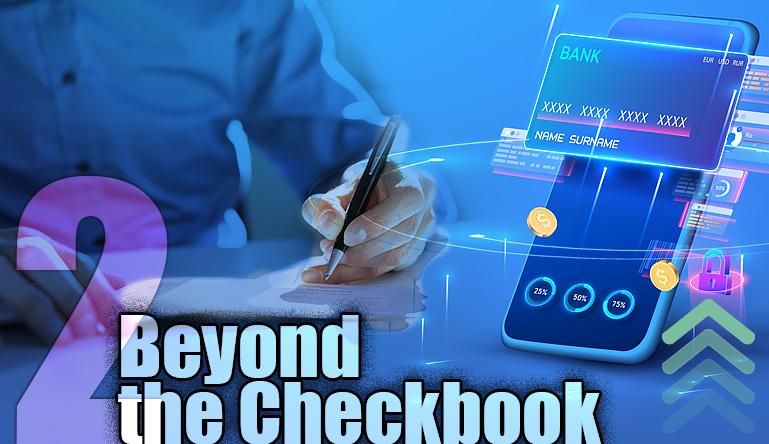-
 Vice President of Sales, Catalis Payments
Vice President of Sales, Catalis PaymentsA passionate sales leader, he builds dynamic teams, driving customer success via strategic growth, innovation, and global relationships.
View all posts
This is part two of our “Beyond the Checkbook: Driving the Digital Government Payment Revolution” series, exploring how digital innovation is transforming government payment systems. Stay tuned for more insights about security, fraud prevention, accessibility, modernization, and real-world success stories from agencies across the country.
Outdated Payment Systems Are Endangering Public Funds
Despite the digital transformation of government services, paper checks continue to expose public agencies to serious financial risk. Once a trusted staple of transaction security, checks are now the most targeted payment method for fraud in the United States.
As agencies strive to improve accountability and modernize operations, continued reliance on paper systems is no longer just inefficient; it’s dangerous. Secure online payment processing for government entities is no longer a nice-to-have. It’s essential to protect public funds and restore constituent trust.
The Growing Threat of Check Fraud
According to recent reports from the U.S. Treasury and Financial Crimes Enforcement Network (FinCEN), check fraud surged more than 84% between 2022 and 2023, with over 680,000 suspicious activity reports filed last year alone. Local governments, utility districts, courts, and school boards are among the many public entities affected by these sophisticated scams.
The core issue? Legacy systems leave too many gaps. Paper-based workflows rely on assumptions: that the mail will arrive on time, that signatures will be reviewed, and that someone will catch discrepancies before funds are released. Unfortunately, manual systems offer limited visibility and no real-time alerts, creating blind spots that fraudsters eagerly exploit.
Without PCI-compliant payment processing for government, even routine disbursements such as vendor checks, utility refunds, or tax overpayments can be intercepted or forged.
How Check Fraud Really Works and Why It’s Hard to Catch
Fraudsters use a range of tactics to alter, forge, or steal checks. The most common include:
- Check washing – stolen checks are soaked in chemicals to erase ink, then rewritten with fraudulent amounts and recipients
- Counterfeiting – fake checks are created using desktop publishing tools and printed on authentic-looking stock
- Mail theft – outgoing or incoming checks are intercepted and sold or altered
- Insider manipulation – employees with access to paper checks forge signatures or redirect payments
These methods often succeed due to the inherent delay, fragmentation, and lack of automation in legacy systems. By the time discrepancies are discovered, the funds are long gone.
Beyond financial loss, check fraud damages public trust. Missed vendor payments, delayed services, and news of embezzled funds raise concerns about government competence and integrity. These incidents aren’t just operational failures; they’re reputational crises. A modern digital platform signals a commitment to transparency, accountability, and modernization.
Why Digital Payment Platforms Outperform Paper Checks in Every Way
Modern digital payment processing for local government addresses these vulnerabilities head-on. Features like encryption, tokenization, multi-factor authentication, and automatic alerts drastically reduce exposure. For example, when a check is mailed, the issuing agency often has no visibility until the recipient cashes it. But when using cloud-based government payment platforms, every transaction is logged, traceable, and monitored in real time.
In one 2023 case, municipalities in the Southwest experienced widespread mail theft targeting vendor payments. Criminals intercepted dozens of checks, altered payee names and amounts, and deposited them using mobile apps before agencies even noticed the breach. Investigations dragged on for weeks, costing time, money, and public trust.
With e-government payment services, agencies can mitigate these risks entirely by routing payments through secure online channels, eliminating physical delivery vulnerabilities while speeding up service.
Even more important, integrated government payment systems provide centralized visibility and control. Finance teams can automate reconciliation, flag anomalies, and verify user permissions across all payment types, from tax refunds and permit fees to court fines and utility bills.
Five Must-Have Security Features in a Modern Government Payment Platform
When selecting a digital platform, agencies should prioritize:
- A customizable government payment gateway with open API
- End-to-end encryption and PCI-compliant architecture
- Multi-channel transaction support for public sector payments
- Seamless, flexible integration with existing government systems
- Vendor support for fraud monitoring and incident response
These features not only prevent fraud but also reduce operational workload. A single, scalable platform can replace fragmented workflows and deliver a consistent experience for both staff and constituents.
The Real Costs and Opportunities of Modernization
Fraud doesn’t just cost money; it consumes resources, erodes trust, and disrupts services. Investigations, audits, and legal action are expensive, time-consuming, and often inconclusive. Even when funds are recovered through insurance or restitution, the administrative burden is staggering.
Investing in automated payment reconciliation for agencies and real-time payment reporting for municipalities is far more cost-effective than recovering from a breach. These capabilities reduce human error, speed up month-end close cycles, and give finance directors greater control over public funds.
Beyond security, modernization brings strategic value. With multi-channel payment processing for agencies, governments can offer digital wallet payments for local government services, pay-by-Bank options, and self-service payment portals for government, all of which align with citizen expectations for convenience and accessibility.
Investing in digital transformation isn’t just a defensive strategy; it’s a catalyst for broader efficiency. When agencies reduce the friction of payment workflows, they unlock staff capacity for more strategic work, from forecasting and budgeting to constituent services. The right technology stack, one that includes a unified, cloud-based platform, becomes the backbone of better governance, enabling faster response times, cleaner audits, and scalable growth.
A proactive approach to payment transformation also supports future innovation. By building around a modular payment solution for diverse government use cases, agencies can easily scale, adapt, and integrate new functionality without needing to re-platform.
Trusted Technology for Safer Government Payments
Catalis Payments is a trusted provider of secure online payment processing for government entities, supporting thousands of municipalities, counties, and state agencies. Our enterprise payment gateway for public sector operations offers flexible, API-driven integration with existing systems and full support for PayPal, Venmo, e-checks, cards, and more.
With tools for court payment processing software, digital payments for permits, licenses, and taxes, and government payment platforms supporting all transaction types, Catalis helps eliminate fraud risk and improve citizen satisfaction.
Contact Catalis for a comprehensive list of our government/public sector solutions.
This is part two of our “Beyond the Checkbook” blog series on digital payment transformation in government. Follow along as we publish more insights each week.


